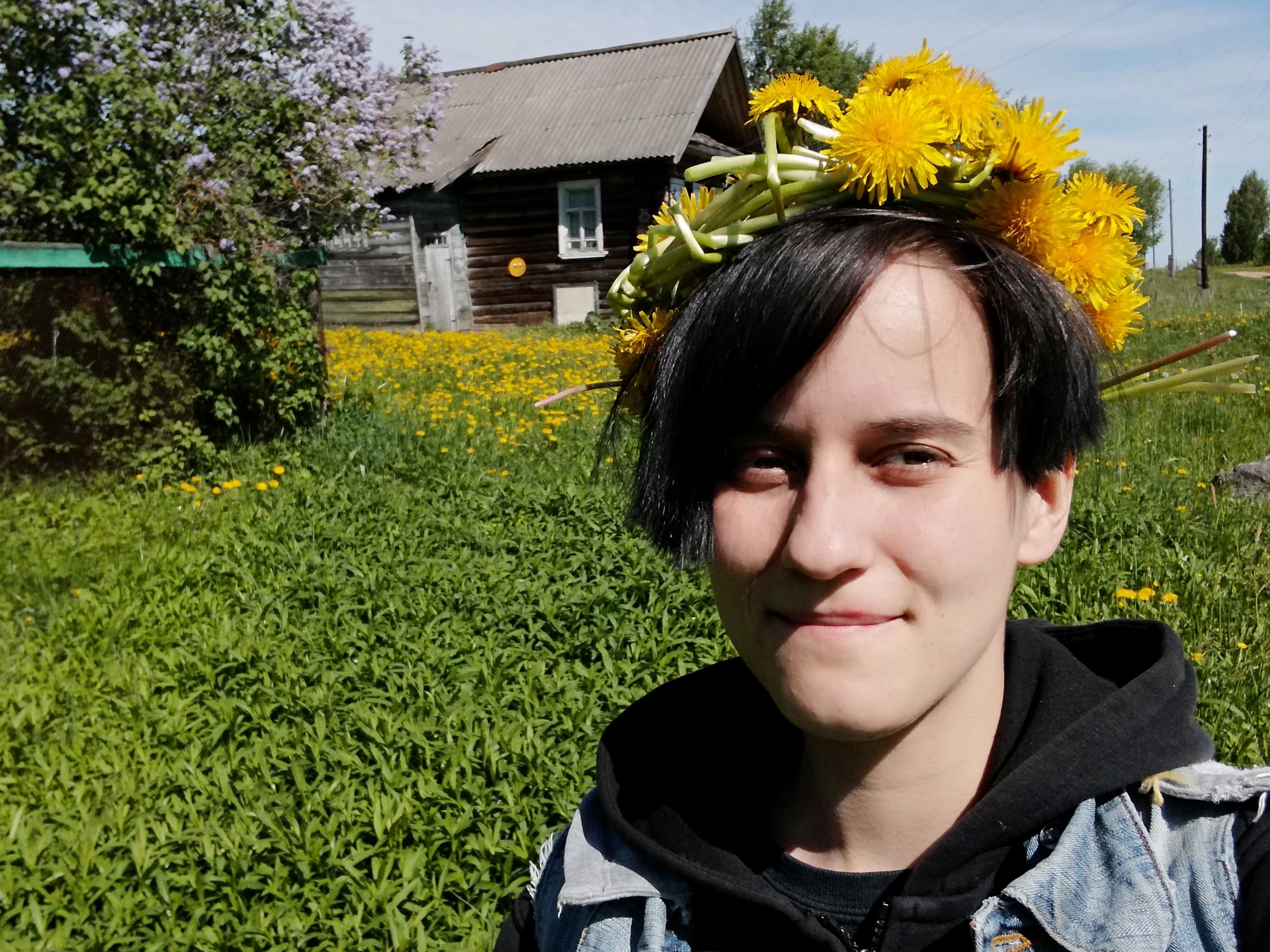


On a linguistic field trip in Tver, Karelia in the summer 2019. Photo: Tuisku Vilenius
Kielipankki – The Language Bank of Finland is a service for researchers using language resources. Tuisku Vilenius investigated a corpus of Finnish online discussions to outline the cultural stereotypes that emerged from the discussions related to the indigenous Saami people.
I am Tuisku Vilenius and I graduated last summer with a Master’s degree in Linguistics from the University of Helsinki. My degree also included Saami studies and Indigenous studies. On the level of languages, I am particularly interested in the Saami languages, the Mayan languages and Nahuatl. Currently, I am working as a Finnish language teacher for immigrants and planning my postgraduate studies.
The aim of my Master’s thesis was to find out how ordinary Finns perceive the Saami people and their culture. As I had just recently begun my Saami studies when I started working on my Master’s thesis, I decided to approach the topic through material that was written in Finnish. I examined which adjectives were used in Finnish online discussions when referring to the Saami, and I also wanted to find out which broader discourses or stereotypes affected the chosen adjectives. At the same time, my research was also a diachronic overview of the Finnish Saami discussions during recent decades.
It was interesting to notice that although the amount of discussions related to the Saami increased significantly during the period I reviewed (2001-2017), the references to the Saami changed little. Throughout the reviewed time period, the discussion was dominated by a stereotypical view in which the Saami were perceived as a traditional and even ancient people. This may be explained by the fact that the average Finn has little day-to-day contact with the Saami. On the other hand, much of the discussion focused on defining who and what the genuine Saami actually are. This reflects the need of the mainstream population to control and define the indigenous people.
I used the Suomi24 corpus (2001-2017) as the source of research data for my study. This corpus is available in the Language Bank’s Korp tool, and it contains discussions from the Suomi24 online forum. I chose this data because it provided a very broad view of the history of Finnish Internet discussion. The online discussion forum material is also more likely to reflect the views of ordinary Finns than, for example, the newspaper articles that had been used as a basis for earlier research on Saami discussions. In addition to the extensive material, I was delighted with the various additional features available in Korp. I was able to easily search for adjectives referring to the Saami with the search tool, and I also used identification data to learn, for example, when and on which discussion area the message had been posted. This allowed me to better outline the topics to which the Saami discussions related.
Vilenius, Tuisku 2021. Oikeat ja muinaiset: saamelaisstereotyypit suomalaisissa internetkeskusteluissa. Master’s Thesis. University of Helsinki. Available: URN:NBN:fi:hulib-202106152749
The FIN-CLARIN consortium consists of a group of Finnish universities along with CSC – IT Center for Science and the Institute for the Languages of Finland (Kotus). FIN-CLARIN helps the researchers in Finland to use, to refine, to preserve and to share their language resources. The Language Bank of Finland is the collection of services that provides the language materials and tools for the research community.
All previously published Language Bank researcher interviews are stored in the Researcher of the Month archive. This article is also published on the website of the Faculty of Humanities of the University of Helsinki.